In South America, dude ranches are called “estancias” and cowboys are called “gauchos.” There are countless similarities among ranches and estancias, including cattle and sheep on a big, open range; hearty, homemade meals sourced on site; and lots of horseback riding. But there are some significant differences between North and South American horsemanship, as I learned during a recent 4-day visit to an Uruguayan Estancia.
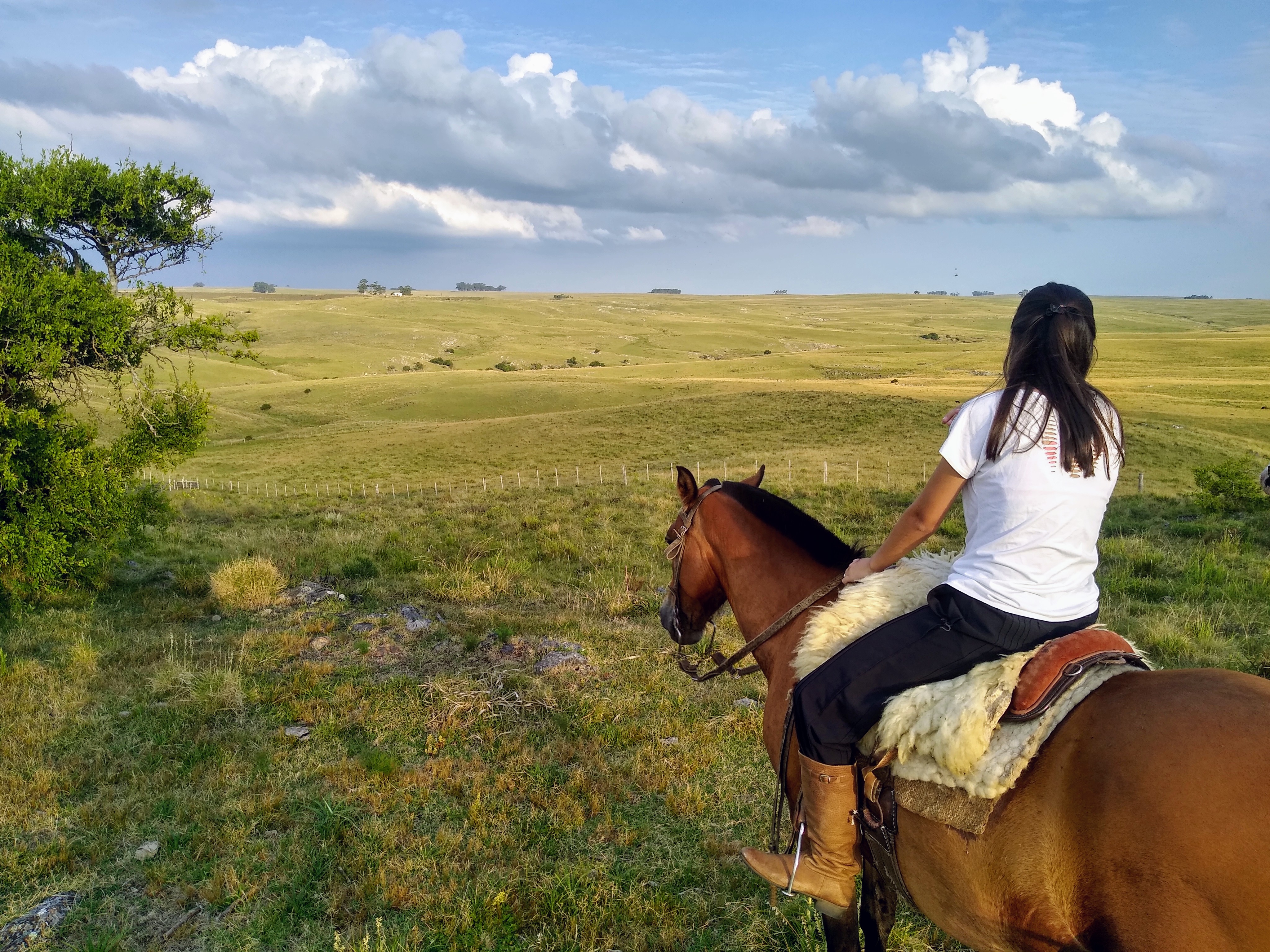
As a young girl growing up in North Carolina, I spent a lot of time riding horses with friends and family members who had them. And while no one would consider me an expert in horsemanship, I became quite comfortable saddling and handling a horse for long, Western-style trail rides. Those long-dormant but deeply embedded skills mostly served as a contrast to the tack (gear) and riding style I was introduced to by Andres, the ruggedly handsome gaucho who runs Estancia los Platanos with his wife, Marina.
We found Estancia los Platanos while perusing one of the best guidebooks I can remember reading: The Guru’Guay Guide to Uruguay: Beaches, Ranches and Wine Country. This highly curated guidebook is written by Karen Higgs, a British ex-pat who came to Uruguay for a job and never left. The Ranches section of the book includes only Estancias that she has visited personally, and she offers accurate first-hand descriptions of what you’ll find when you get there. She even includes a handy matrix comparing features of all the ranches, which is absolutely invaluable when it comes time to make a choice.
Once we arrived at the ranch, I learned that nearly all of the tack is slightly different from what I grew up using, starting with the bridle. Everything but the bit – or more specifically, the mouthpiece – will look familiar to Western-style riders. Instead of using a straightbar, jointed, or mullen mouthpiece, gauchos use a ported mouthpiece, which features a deep, metal “U” shape that presses into the roof of the mouth when the reins are tightened. While this is a lot less gentle on the horse than other styles, it gets their attention quite quickly and easily, which is important when you hold the reins in your left hand only (as gauchos do), keeping your right hand free to wield your lasso, fusto (riding crop), rebenque (whip), or muela (knife) as needed. The reins are separated, weighted at the ends, and knotted together at the nape of the horse’s neck to prevent them from falling to the ground.
The saddle set-up consists of several layers, starting with blankets made of natural fibers (never synthetic) to wick away moisture while providing protection from chafing. The saddle comes next. It is a simple, two-piece structure laced together along the spine with leather and sporting simple metal stirrups, but no saddlehorn or straps. To hold the saddle in place, a wide strip of leather with metal rings on each end is tossed over the top of the saddle and connected by thinner leather straps to the metal rings at each end of a girth belt, which is situated just behind the last set of ribs. The leather straps are looped between the rings a few times to tighten the belt, but not cinched in a Texas T Latigo knot. Next comes a thick, wooly sheep hide, procured from a previously slaughtered lamb from the ranch’s own livestock. That is held in place by a second, thinner girth belt system, also looped together with leather but not cinched.
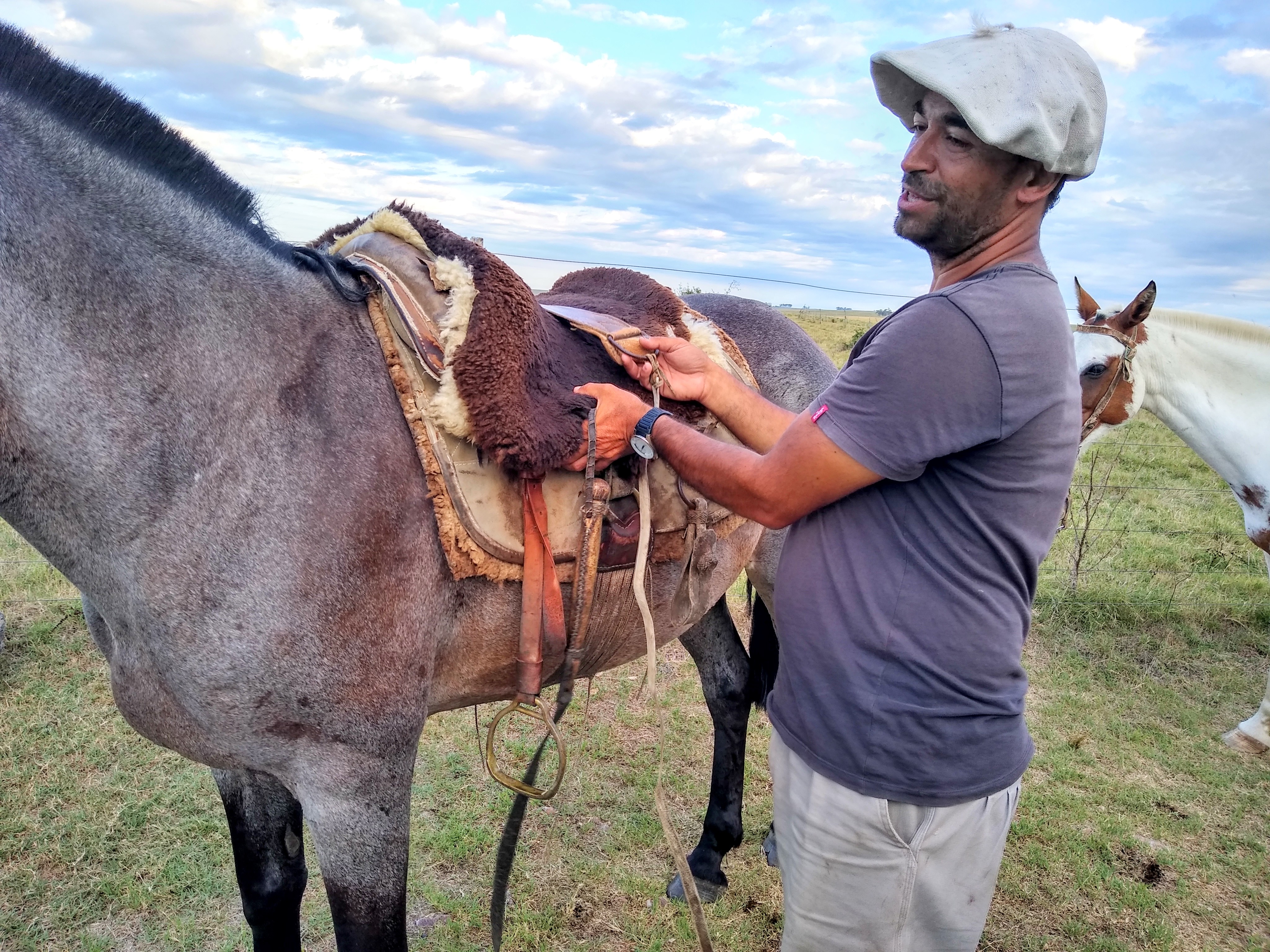
Because the gaucho saddle is not quite as tightly secured as a Western-style saddle, you can’t use the stirrup as leverage to mount the horse. Instead, you put your left foot in the stirrup and, grabbing a handful of the horse’s mane to steady yourself, perform a graceful, athletic leap from your right leg, using the jump’s momentum to swing yourself over the horse’s back. (Or, if you’re me, you get help from Andres, who knows exactly where to support your left leg to make up for your lack of leaping ability.)
Once you’re in the saddle, you’re meant to slide your feet into the stirrups and push them forward and out to provide the leverage you’ll need to stay in the saddle, since there’s no saddle horn to hold onto. This also helps to keep you from digging your heels into the horse’s sides in a natural but ultimately vain attempt to stay in the saddle, because pressing your feet into the horse’s sides is a request for the horse to trot instead of walk, which you aren’t ready for, I promise.
Gauchos train their horses for neck-reining instead of direct-reining, which means instead of pulling the right rein to turn right by turning the horse’s head in that direction, you steer it a bit like you would a motorcycle. To turn right, lay the reins across the left side of the horse’s neck while leaning slightly to the right, into the curve.
Using only your left hand to steer leaves your right hand free to whip out your fusto as needed. This gaucho riding crop features a short leather strap attached to one end and a wrist strap attached to the other. Gauchos will slap their knee-high boots with the leather strap to make a noise that gets the attention of distracted cattle without fazing the horses. It can also be used to scare away territorial bulls or to strike and subdue dangerously disobedient livestock as a last resort. On one of our afternoon rides across the range, Andres spun his fusto overhead while galloping toward a pair of curious wild horses who came a bit too close for comfort. They changed direction abruptly and kept their distance.
If the fusto doesn’t do the trick, a gaucho might resort to his rebenque, a whip that makes a loud, snapping sound when cracked in the air. It can be used to strike uncooperative cattle, but Andres cringed at the thought of doing so.
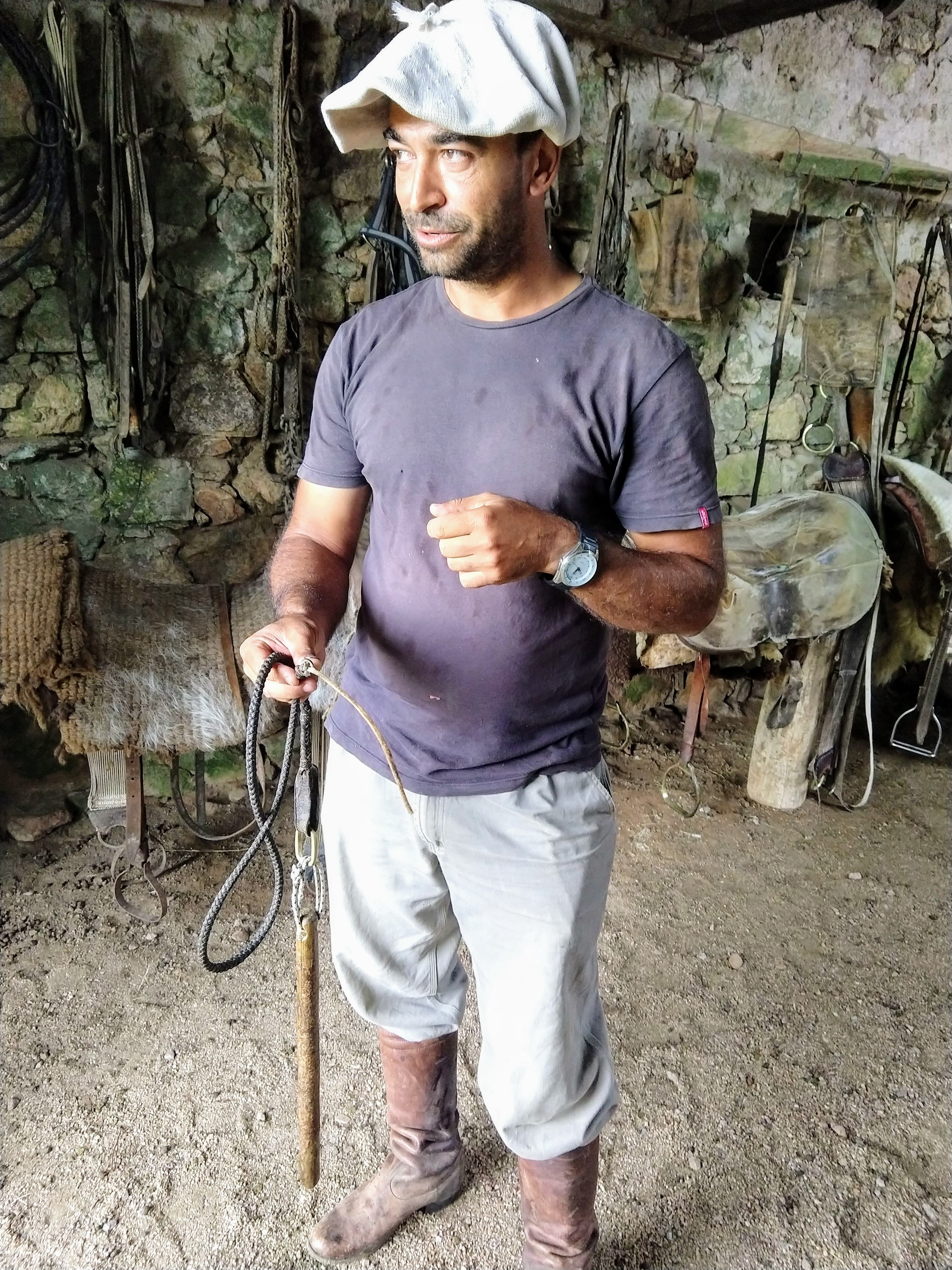
Like Western-style cowboys, gauchos use lassoes as needed. These are made of braided leather treated with sheep fat. One end of the lasso is passed through a metal ring at the other end to create an adjustable loop, then the lasso is coiled into a loose series of circles and tied at the far end to one of the metal rings on the saddle-securing strap. This set-up lets the horse help hold a dogie in place by pulling sideways to keep the lasso taut, while the gaucho works on the ground.
Gauchos also carry a muela, which is a sturdy, sword-shaped knife that is sharpened on both sides and sheathed in a thick leather sleeve hanging from the right side of their belt. Andres used his like a machete to cut overhead twigs and vines that were working their way into a riding path through the trees. His horse showed concern but was not cowed by the big silver blade swinging around its head for several minutes.
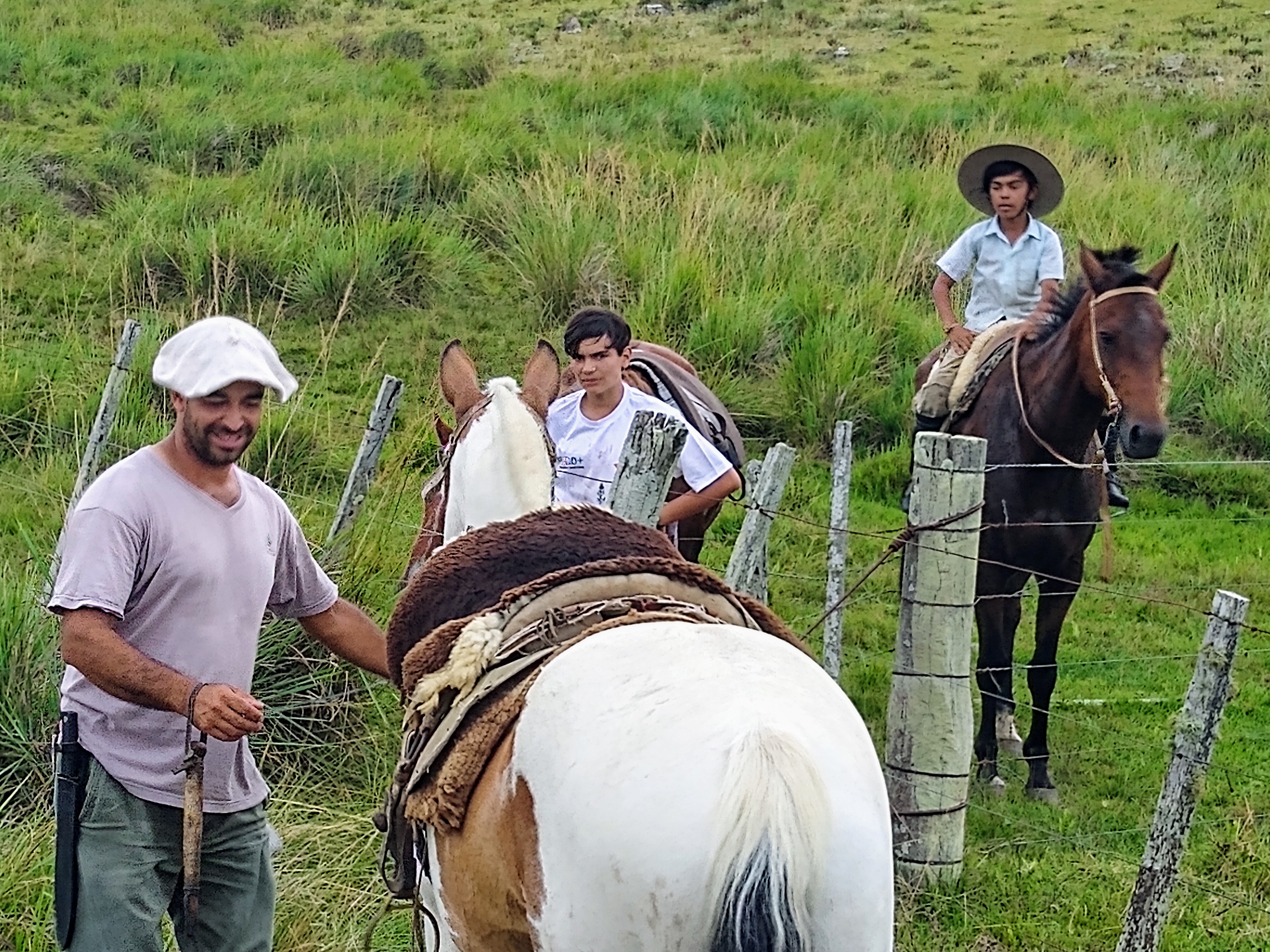
The final – and perhaps most recognizable – bit of gaucho gear is the “boina,” a floppy, French beret that is made from various materials to weather whatever season is at hand. Because it’s summer here in January, Andres was sporting a cotton weave boina in off-white. In the winter, he might wear a thick wool or leather version.
Gauchos are busiest during the summer months, when they are herding livestock from one pasture to another, keeping the water troughs full despite lack of rain, and maintaining or repairing all the perpetually deteriorating structures and equipment. During the winter, gauchos make and take care of their tack, braiding leather, massaging it with sheep fat, and coiling and hammering any fresh, stiff leather strips to make them supple. According to Andres, gauchos who work with hand-made leather tack instead of plastic and other synthetic substitutes don’t need to wear gloves, as the treated leather won’t burn or chafe their skin as it runs through their hands.
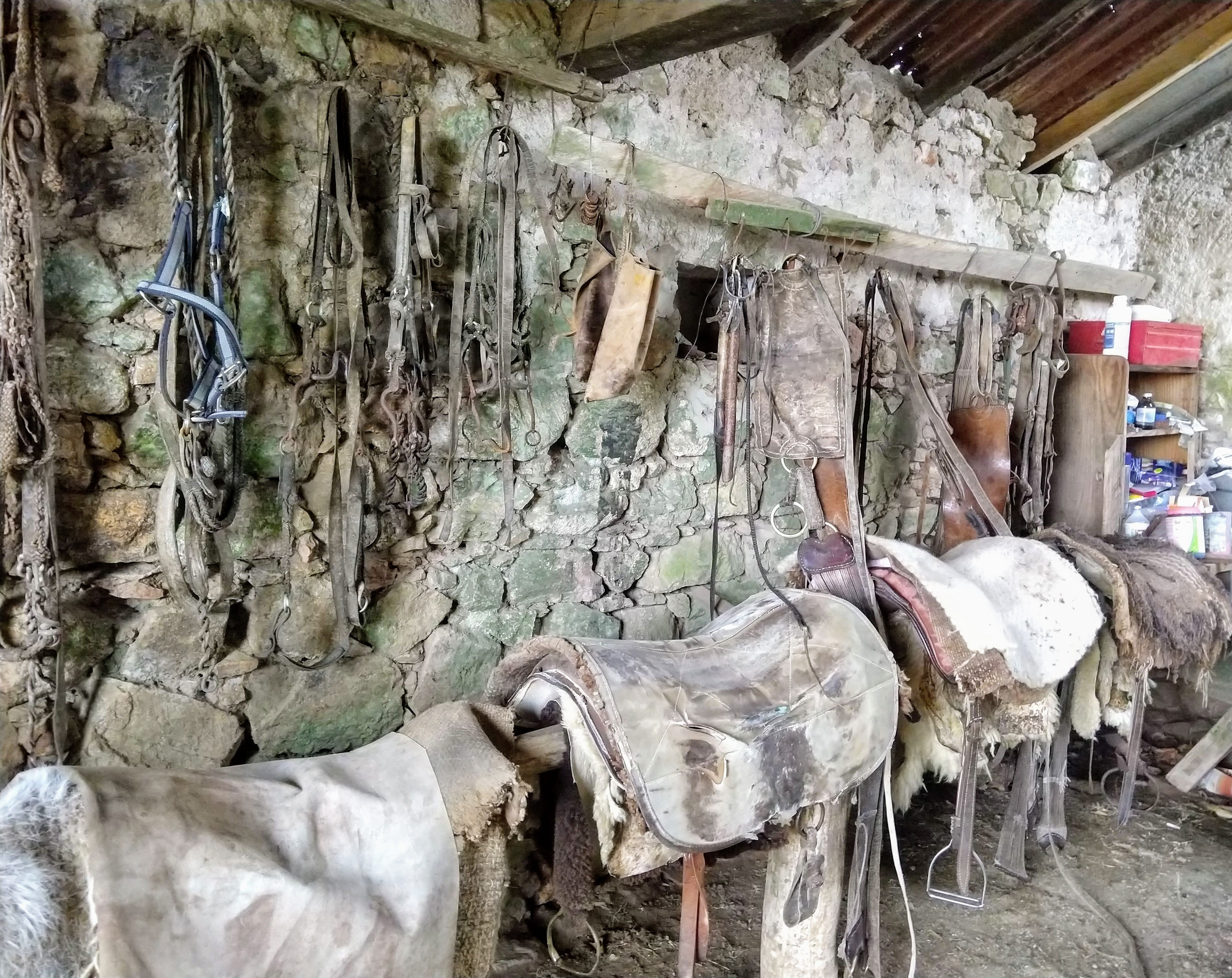
Repurposing tack is also common practice. When a gaucho’s leather boots crack at the ankle – as they all do eventually – they cut off the calf sections, sew them together at the bottom, and string them together to make mini saddle bags that they fill with medicine to treat livestock injuries and ailments they may come across on the range.
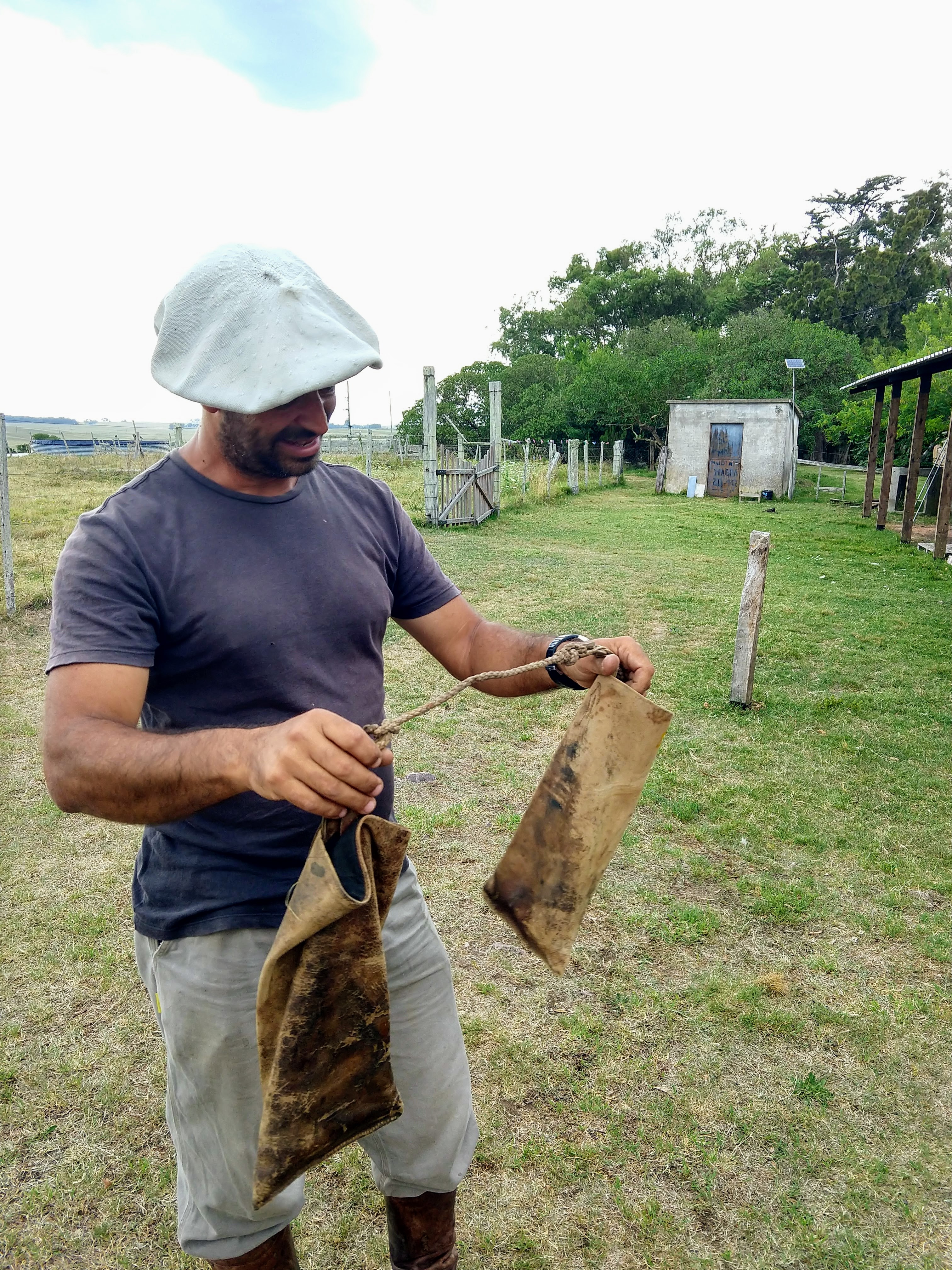
In case you’re wondering, the gaucho saddle is remarkably comfortable, and staying in it is relatively easy once you get used to pressing your feet forward and out in the stirrups, like highway pegs on a cruiser motorcycle. You learn quickly not to reach for the saddle horn, and only partly because it doesn’t exist. There is a front section of the saddle that you can physically grab hold of, but it will bring on such an imbalanced bounce that you will endeavor to avoid it forthwith.
During one of our afternoon rides, Andres was training one of the younger horses who regularly exhibited a marked reluctance to trot, canter, or gallop when prompted. This horse only wanted to walk. Some might say he was lazy. So, Andres spent two hours forcing him to exercise – chasing away wild horses, running circles around bushes, and racing up hills. They also practiced new communication methods, with Andres dangling his fusto or “dazzling” his fingers within sight of the horse’s right eye to encourage him to turn left.
Another afternoon, I was lucky enough to capture a short video of Andres riding another horse that he describes as intelligent, feisty, and a little bit crazy. This previously untrained horse not only learned quickly to work with cattle once they brought him to their ranch, he has taken to it like a fish to water. Like a good cutting horse, he revels in exploding into a gallop, and turning or stopping on a dime. He and Andres seem to meld into one, with or without a saddle. When Andres dismounts and drops the reins, the horse follows him around like a puppy, mimicking his every move.
If you want to learn more about gaucho tack and training methods, these two videos will provide a visual introduction:
Gaucho horse saddling video: This process and tack are slightly different from those Andres used, but you’ll get the idea.
Gaucho mare taming magic: This video is from the Patagonia region of South America, which lies south of Uruguay.